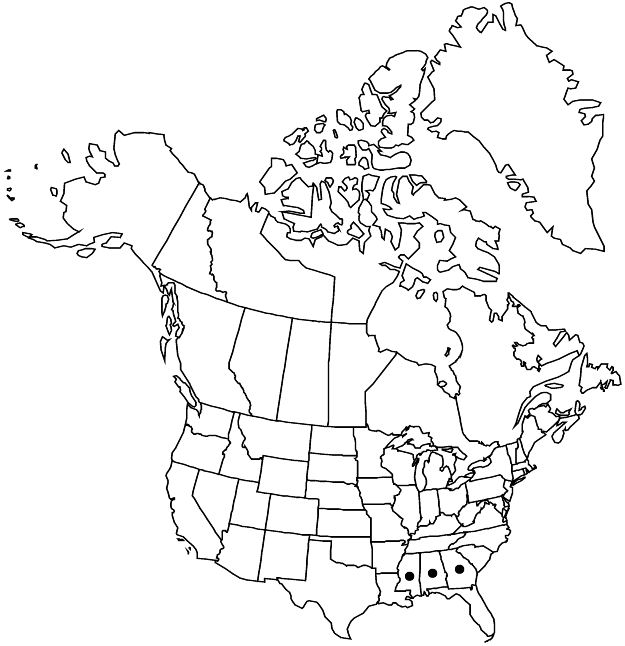Crataegus aemula
Biltmore Bot. Stud. 1: 53. 1902.
Shrubs or trees, 30–50 dm. Stems: trunks short, slender, 5–7 cm diam., bark smooth to slightly fissured or scaly; compound thorns on trunks sometimes present; twigs: new growth reddish green, pubescent, 1-year old pale tan, becoming gray-brown; thorns on twigs ± straight, chestnut brown, gray later, ± slender, 3–5 cm. Leaves: petiole 0.5–1.5 cm, pubescent at least young, stipitate-glandular; blade elliptic-ovate or broadly elliptic to suborbicular, 3–5 cm length/width = to 1.5, ± thin, base rounded or broadly truncate, lobes 3 or 4 per side, sinuses shallow, lobe apex acute, margins serrate, teeth regular, veins 4 or 5 per side, apex acute, abaxial surface glabrous, veins sparsely hairy, adaxial sparsely pubescent young, glabrescent. Inflorescences 5–10-flowered; branches coarsely hairy; bracteole margins densely glandular. Flowers 14–18 mm diam.; hypanthium sparsely pubescent; sepals lanceolate, 4 mm, margins glandular-serrate, abaxial pubescence not recorded; stamens 10, anthers pink-purple; styles 3–5. Pomes bright red, suborbicular, 10–13 mm diam., shiny; sepals spreading-reflexed or often erose; pyrenes 3–5, dorsally shallowly grooved. 2n = 51, 68.
Phenology: Flowering Apr; fruiting Sep–Oct.
Habitat: Oak flatwoods, brush
Elevation: 50–600 m
Distribution

Ala., Ga., Miss.
Discussion
Crataegus aemula grows from northwestern Georgia to central Mississippi; it is locally common. The species has escaped notice in floras since Beadle in Small (1903). It is distinguished from sympatric species of the series by twig color, new growth and inflorescence indumentum, leaf shape, stipitate-glandular petioles, and bright red pomes. Remarkably, it seems most similar to C. frugiferens, provisionally placed in ser. Apricae, with which it shares stipitate-glandular petioles but differs in larger (3.5–5 cm) leaves of a proportionately narrower (somewhat narrowly ovate to broadly elliptic) shape with cuneate bases and larger marginal teeth, and 2 or 3 distinct lobes per side. Crataegus frugiferens also has a similar distribution.
Selected References
None.